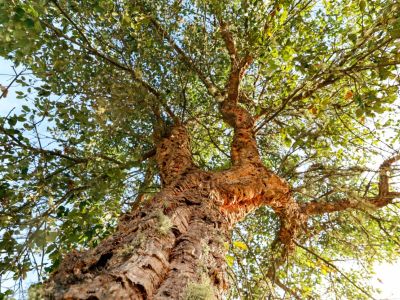Cork Oaks in the Landscape
Cork oak trees (Quercus suber) are native to the Western Mediterranean region and are still cultivated there for their bark. These trees are slow-growing giants, eventually maturing to 70 feet (21.5 m.) or taller and equally wide. Woody and upright, cork oaks in the landscape have small, rounded leaves that are gray underneath. According to cork tree information, the leaves stay on the branches all winter long, then fall in spring as the new leaves appear. Cork oak trees produce small acorns that are edible. They also grow the fascinating corky bark for which they are cultivated commercially.
Cork Tree Cultivation
If you want to cork oaks around your home, it may be possible to grow these trees. Cork oak cultivation is possible in U.S. Department of Agriculture plant hardiness zones 8 through 10. So if you are interested in growing a cork oak tree, you’ll need to find a site with full sun and good drainage. The soil should be acidic, since the tree’s leaves yellow in alkaline soil. You can grow cork oak trees by planting acorns if you can’t find a seedling plant. Young cork oak trees grow slowly and require regular irrigation. As the trees mature, they become drought-tolerant. Still, even mature trees need a few good soakings per month over the course of the growing season. These make excellent shade trees, as their canopies, full of small leaves, offer moderate to dense shade. Likewise, healthy trees are easy maintenance. You don’t need to prune them unless you want to elevate the base of the canopy.
